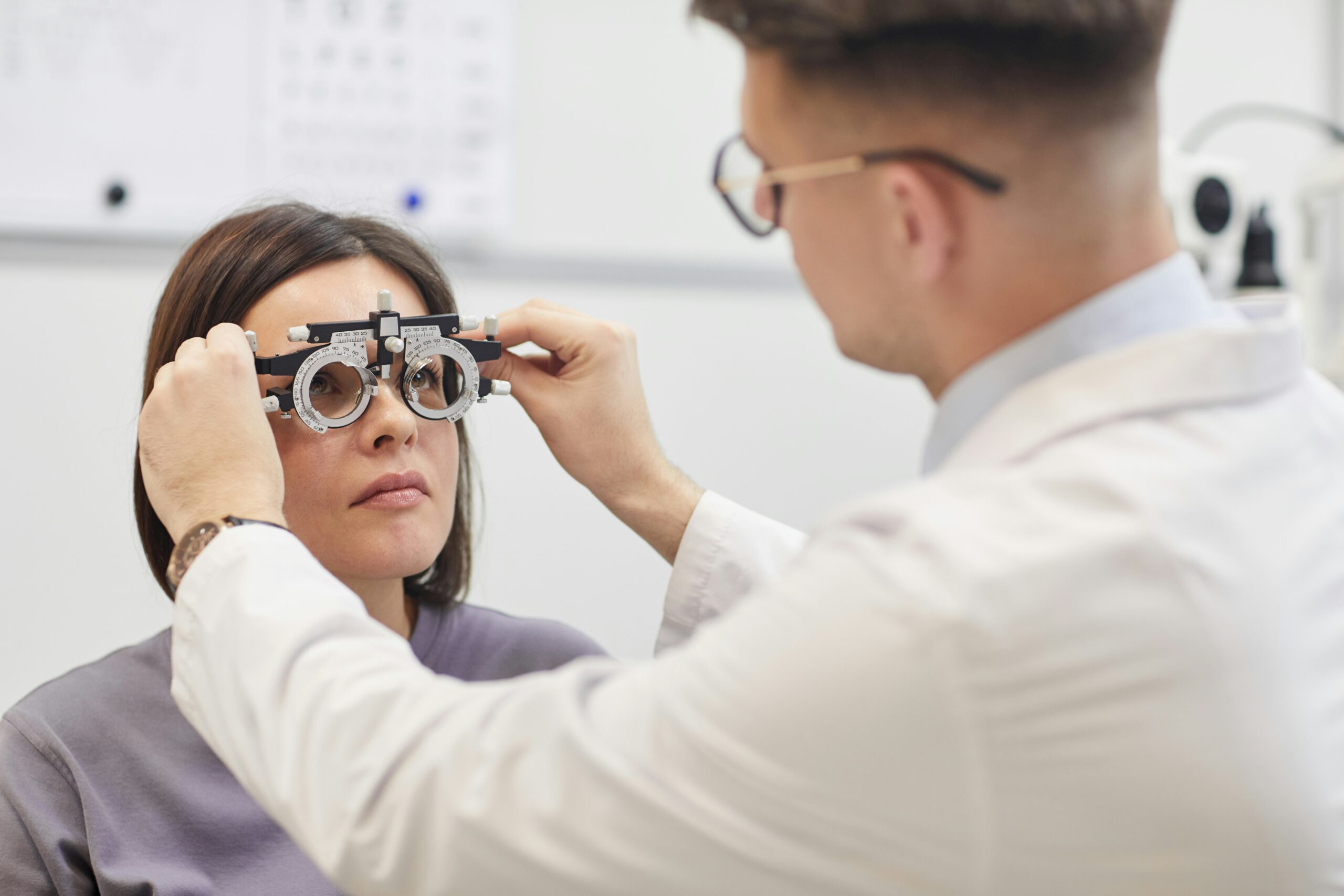
Cataracts are a common issue, especially among older adults, that can cloud the natural lens of the eye, leading to blurred vision. Traditional cataract surgery typically involves removing the clouded lens and replacing it with a clear artificial lens. While this procedure often restores vision, many people still require glasses for reading or distance vision, even after surgery. However, refractive cataract surgery is a more advanced solution that not only removes cataracts but also reduces or eliminates the need for glasses post-surgery.
Understanding Refractive Cataract Surgery
Refractive cataract surgery is a specialized approach that combines cataract surgery with the use of advanced intraocular lenses (IOLs). In this procedure, the cloudy natural lens is replaced with a high-tech IOL designed to improve vision at different distances. Unlike traditional lenses, which are often mono-focal and correct only one distance (typically near vision), refractive lenses can be multifocal or accommodative, offering a wider range of vision correction.
These advanced lenses are designed to reduce the need for glasses by providing clear vision across multiple focal points, whether for reading, intermediate tasks like using a computer, or distance vision. By addressing these different vision needs with a single IOL, refractive cataract surgery can significantly enhance the quality of life for patients, reducing or eliminating their dependency on glasses after surgery.
Types of Intraocular Lenses (IOLs) Used in Refractive Cataract Surgery
The key to refractive cataract surgery is the selection of the right intraocular lens (IOL). There are several types of IOLs available, each suited to a patient’s specific needs. The most common types include:
Multifocal IOLs: These lenses have multiple focal points, allowing patients to see at different distances without the need for glasses. Multifocal lenses are particularly beneficial for individuals who require correction for both near and distant vision.
Accommodative IOLs: These lenses can shift position inside the eye, allowing them to adjust and focus on objects at varying distances, mimicking the natural accommodation of the eye’s lens.
Toric IOLs: For patients with astigmatism, toric IOLs can correct both the cataract and the astigmatism, offering clearer vision and reducing the need for corrective lenses.
Extended Depth of Focus (EDOF) IOLs: These lenses provide a smooth transition between near and distant vision, offering better visual clarity and reducing the need for glasses for many activities.
Each IOL has specific advantages and is chosen based on the patient’s visual needs, lifestyle, and the presence of any other conditions, such as astigmatism.
How Refractive Cataract Surgery Reduces the Need for Glasses
Traditional cataract surgery typically results in clearer vision; however, patients may still require glasses for specific tasks. The introduction of refractive cataract surgery, however, changes this by offering a broader range of vision correction options. Here’s how it helps:
Correction for Presbyopia: Presbyopia is the age-related loss of near vision that affects most people as they get older. Refractive cataract surgery with multifocal or accommodating IOLs can effectively correct this condition. By restoring the ability to focus on close-up objects, patients can perform daily tasks such as reading, sewing, or using a smartphone without the need for reading glasses.
Improved Distance Vision: For patients who require correction for distance vision, refractive cataract surgery offers the ability to enhance farsightedness and reduce the need for glasses while driving, watching TV, or engaging in outdoor activities. With the appropriate IOL, patients can often enjoy sharp, clear-distance vision without the constant need for corrective eyewear.
Customization Based on Lifestyle Needs: Refractive cataract surgery allows for a personalized approach to vision correction. Depending on the patient’s specific lifestyle—whether they need to see at varying distances, engage in activities such as sports, or work on a computer—surgeons can select the optimal IOL to meet these needs, thereby reducing the reliance on glasses.
Better Post-Operative Outcomes: While traditional cataract surgery often yields good vision, refractive cataract surgery can provide even more substantial improvements in visual outcomes. Many patients report greater satisfaction with their vision after refractive surgery, as it enables them to experience a broader range of vision correction options. This comprehensive approach to vision restoration contributes to a greater reduction in the need for glasses post-surgery.
Benefits Beyond Vision Correction
In addition to helping patients avoid glasses, refractive cataract surgery offers several other benefits that enhance the overall quality of life:
Convenience: Not having to rely on glasses for daily activities is incredibly convenient. Whether it’s waking up in the morning, driving, or engaging in hobbies, patients appreciate the freedom from the constant need to put on and adjust their glasses.
Improved Aesthetics: For those who feel self-conscious about wearing glasses, refractive cataract surgery offers an aesthetically pleasing alternative. Many patients feel more confident and comfortable with their improved vision and the absence of eyewear.
Increased Safety: Not having to wear glasses can also be a safety benefit, especially for those who are active or elderly. Glasses can be a safety hazard when they fog up, get scratched, or fall off. Refractive cataract surgery minimizes these concerns and can lead to a more active, confident lifestyle.
Enhanced Visual Experience: With advanced IOL technology, patients experience improved contrast sensitivity, reduced glare, and enhanced visual clarity in various lighting conditions. This results in a more vibrant and enjoyable visual experience in both indoor and outdoor settings.
Are You a Good Candidate for Refractive Cataract Surgery?
Not every cataract patient is a candidate for refractive cataract surgery, as the procedure requires careful planning and evaluation. Factors such as overall eye health, the presence of other conditions (like macular degeneration or diabetic retinopathy), and the patient’s specific vision needs will all play a role in determining eligibility.
It’s important to discuss your options with your ophthalmologist to determine the most appropriate approach to cataract treatment. If you are interested in avoiding glasses post-surgery, your doctor can help you explore refractive cataract surgery options that best align with your lifestyle and visual goals.